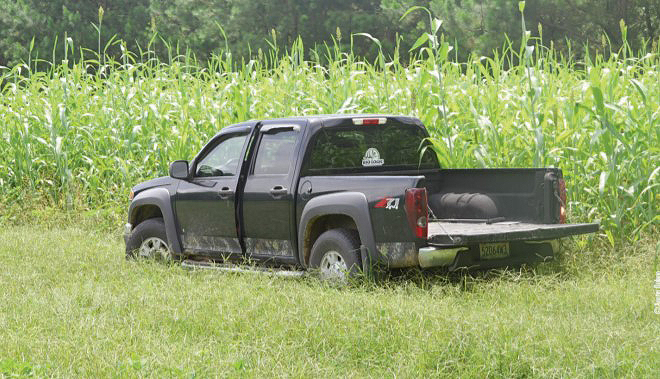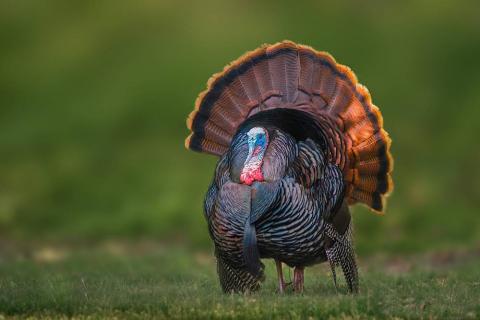Austin Delano | Originally published in GameKeepers: Farming for Wildlife Magazine. To subscribe, click here.
Have you ever had a really nice food plot that deer just didn’t seem to use that much, especially during daylight? Occasionally I will consult with a land manager who seems to be doing everything right, but according to lack of sightings while hunting and trail camera proof, the deer just won’t consistently use the field during daylight hours. When this also includes the spring/summer period when hunting pressure is not a factor we know something must be changed. Whitetails must feel safe when feeding and close security shelter and proper transitional cover are usually high on the list of solutions

The older age class of both bucks and does can be shy of big, open fields or food plots that are void of close security cover. Whitetails are also very curious animals and love to check out something new when there is a change in the landscape. Here are a few suggestions you can use to try and make your food plots as effective as possible from a hunting and utilization standpoint.

or Egyptian wheat can make the deer walk right where
you need them.
Perimeter Screens
Create a screen around the perimeter of the plot or areas that allow the plot to be seen by a road or neighbors. We have seen great results from using tall growing blends like Blind Spot to create a transition zone from woods and/or thickets where the deer are coming from, and the food plot. Planting a screen around the field will help the deer have a feeling of security and encourage daytime use.
If you have food plots that are easily seen by a neighboring property or worse yet a public road, plant a screen to shield the view. You’ll be amazed how the deer know when they can’t be seen. This also serves to discourage poaching from outlaws; they are less likely to trespass on your property if they can’t see deer, turkey or other game in your fields.
In the case of screening a road, border or some place you need a more permanent fix, native warm season grasses (NWSG) and/or trees and shrubs will obviously last longer than annual grasses and may suit you best. Conifer trees such as spruce and pine make great screening cover. You will want to account for both the horizontal and vertical growth of these plants. Trees should typically be planted staggered in several rows so you have screening cover from any angle.
Screened Approach

keeping in mind some trees/shrubs will branch off vertically and
horizontally. This amazing screen was designed by Plots Plus, out of
Tennessee.
Use blends like Blind Spot or Whistle Back to create a hidden path to your stand. We have all had one of those stands that were in a great spot for an afternoon hunt, but almost impossible to get to without being spotted or bumping deer out of the field on your way in. The 8 to12 ft tall variety of sorghum in Blind Spot can make a great covered path to get you to your stand unnoticed. Just a tractor width wide planting is all it takes.
Some crops can obviously also be used. Corn would be the most common choice, but sunflowers, sorghum, millet and hemp are other tall choices that can be used. Large fields or food plots can be made much more appealing to whitetails and easier for you to hunt by dividing it into sections outlined in some sort of screening cover.
Be creative…you can use these tall growing blends to funnel deer to a corner food plot or make them walk right by your stand for that up close archery shot. When deer have good tall cover to walk through, they feel safe and are more likely to use your connected plots during daylight. Whitetails love to travel using the edges, ecotones and transition lines between food and cover.
Timing is Everything
Make sure to get these blends planted with enough time to grow to full maturity. These sorghum, millet, and Egyptian wheat seeds need a good 80-90 days of growth to reach full height and maturity. If you wait until a month before the deer season starts to think about planting, you’ll be too late. Late spring through early summer is a great time to get these blends started. Fertilizer recommendations without a soil test would be 200-300 lbs per acre of 17-17-17. Planting depth should be about ½ inch up to 1 inch deep. Blind Spot or Whistle Back do really well planted with a drill or planter using a “sorghum setting” on the planting rate. These blends can also be broadcast onto a well prepared seedbed and lightly covered with a drag or cultipacker. Planting rate for Whistle Back is 30 to 40 lbs per acre. Blind Spot should be planted around 16 lbs per acre.

plot.
A major bonus from using these blends to create screens and cover is the amount of seed produced that is highly preferred by turkeys, quail, and other birds. Another ancillary benefit of using these blends is the escape cover and habitat it creates for small game and other critters as well as adding to the overall diversity of a property.
Wrapping up
As mentioned, you can also utilize native warm season grasses as a more long term, perennial option for your screening and partitioning fields. These also require some management and attention to ensure a good stand that meets your goals. Nativ Nurseries’ Barrier Blend was designed with this purpose in mind. It contains varieties such as Big Bluestem, Alamo Switchgrass, IronWeed, Maximillian Sunflower, and White Wingstem that will average 7-10 ft in height. There has been a significant decrease of CRP ground especially in the Midwest during the last decade, the native grasses and plants that inhabited these areas were heavily used by wildlife. Whether you use annuals or perennials to create your screens or travel corridors, food plot architecture can be a lot of fun.




























